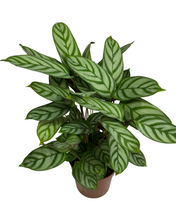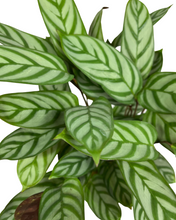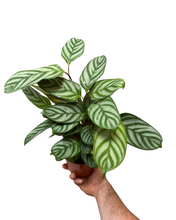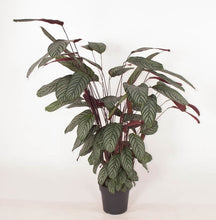Ctenanthe setosa are native to tropical Brazil and are part of the Marantaceae family. This variety has canescent petioles and lance shaped leaves. Leaf blades are pale grey-green in colour with green lines and grey-purple undersides. Leaves move to be upright at night; this is known as photonasty; this particular movement is driven by two light-sensitive pigments in the plant: one is sensitive to red light - this raises the leaves; the other is sensitive to blue light - this lowers them.
The pulvinus is a motor organ at the base of the leaves and this is responsible for the movement. The cells that make up the pulvinus swell and shrink due to turgor pressure in accordance to the circadian clock and create the visible movement in the leaves (Zhou C, Han L, Fu C, etc. 2012).
Genus name is derived from the Greek ‘ktenos’ meaning comb and ‘anthe’ meaning flowered, this is in reference to the bloom it produces. The specific epithet comes from the Latin saeta, meaning a bristle, I think this is in reference to the canescent petiole.
Light: Even if this plant doesn’t see the sun but receives indirect light all day, it will put out new growth, however, for optimum growth and pronounced variegation, provide this plant with bright indirect light, meaning the plant sees the sun for 0-4 hours per day - this could be through trees or a translucent curtain.
Water: Given adequate light, keep the potting mix evenly moist. If the soil dries out too much, the plant will become limp, aerate the mix with a few pokes of a skewer or blunt stick, pour water slowly over the top and allow the water to pass through the drainage holes. Over the next day or so, the leaves will perk up.
Fertilising: Feed your plant every other watering during the growing season or when you observe active growth. You can dilute fertiliser to half the recommended amount but never add more.
Potting mix: A well draining mix composed of coco coir, perlite or vermiculite, a little bit of orchid bark and worm castings. Adding a small amount of sphagnum moss will help to retain moisture in the mix.
Temperature: 15-23°C.
Humidity: Ctenanthe prefer higher humidity (over 60%) but adapt well to average home humidity. You can increase humidity by placing the plant on a watered pebble tray or using a humidifier.
Ctenanthe are non-toxic.







